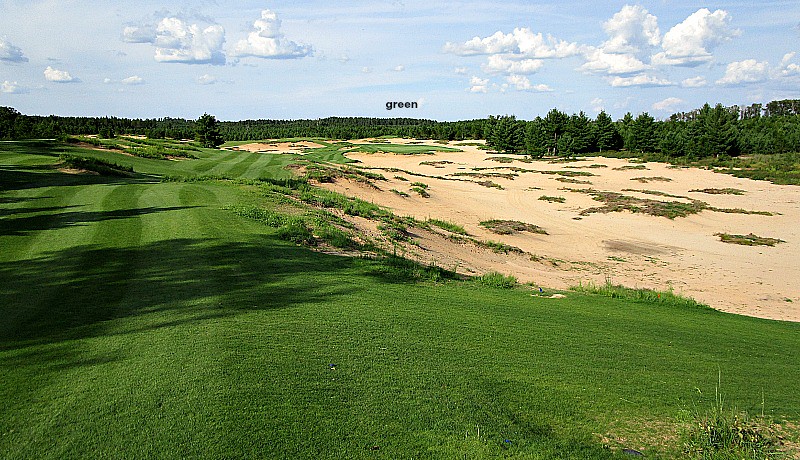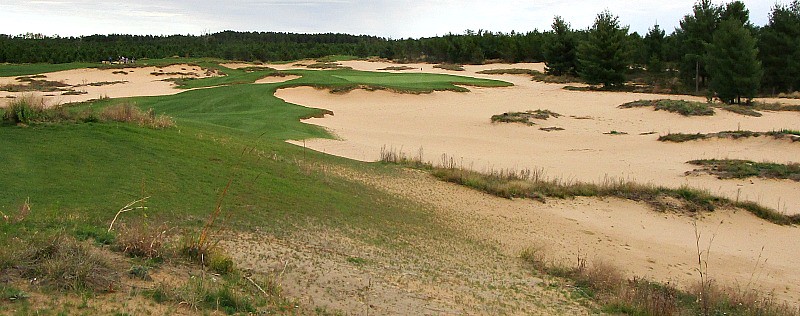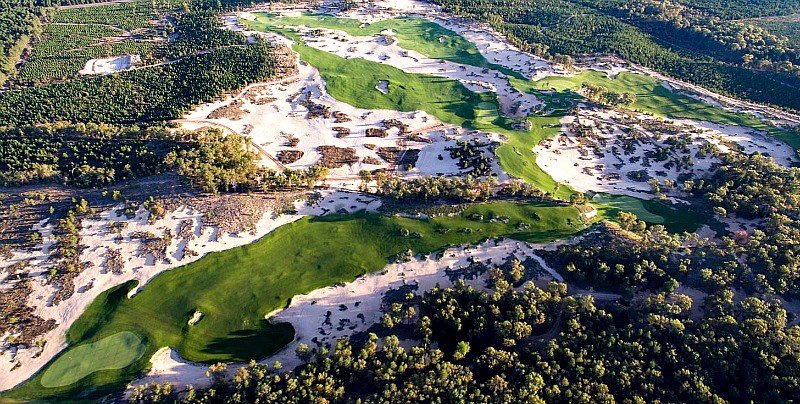 Photo from Andy Johnson of The Fried Egg
Photo from Andy Johnson of The Fried Egg
**Updated October 16, 2017**
David McLay Kidd is currently building Mammoth Dunes, the second course at Sand Valley. Construction started in 2016. Six holes were available for preview play in June, 2017. 9 holes were available on August 1, 2017. The official grand opening is planned for 2018.
I visited Sand Valley in late October 2016, August 2017, and October 2017 and have walked the entire course.
Kidd's course has some of the same great characteristics as the 1st Sand Valley course that was designed by Coore and Crenshaw. Both have a wide open Bandon Dunes-like feeling on most of the holes. There are no formal tee boxes on either course, which gives it a terrific clean look. The tee areas are flat portions of the fairways. The turf is fescue and is cut at either green or fairway heights. The absence of rough on both courses is very refreshing.
The land on Mammoth Dunes is hillier, but still very walkable. It will likely be more forgiving as there will be 120 acres of turf vs. 75 on the C&C.
THE ROUTING
The course is routed around a large “V” shaped sand ridge. Kidd used this land form, which rises 80 feet high in places, to create an interesting variety of holes that play uphill, downhill and along the sides of the ridge. It’s easy to see how the ridge impacts many holes on this routing and topo map (North is at top).
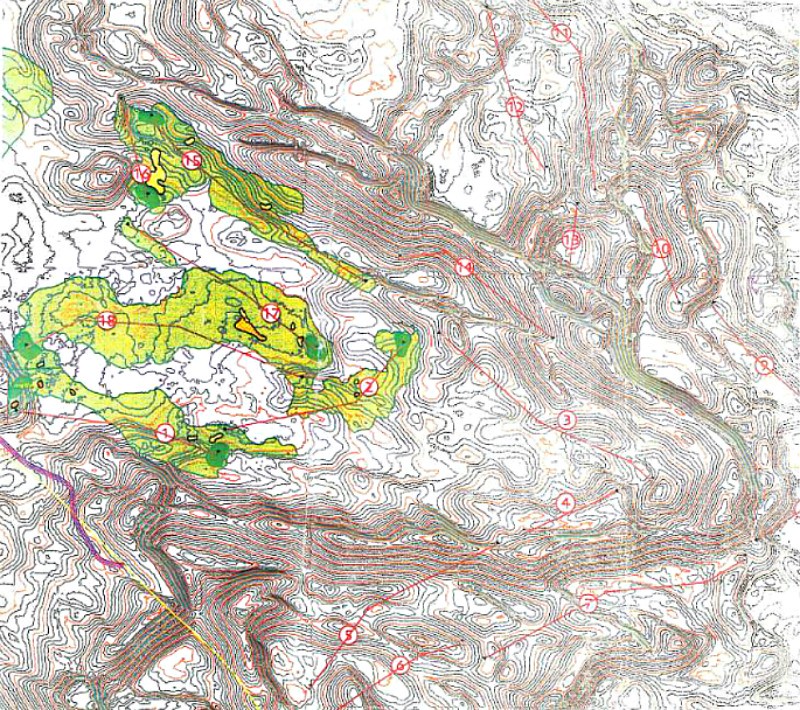
THE HOLES
The 9 holes that are open for preview play are 1-5 and 15-18. All of the remaining nine holes have been seeded and are growing-in nicely. The superintendents have described the 2016-17 grow-in weather as nearly ideal.
Following are photos from all 3 of my visits.
Hole 1 – Par 4
The view from the elevated tee gives the player a good idea of what to expect over the next 18 holes: Wide fairways offering different routes to the green, expansive views, large greens, elevation changes, and lots of sand.
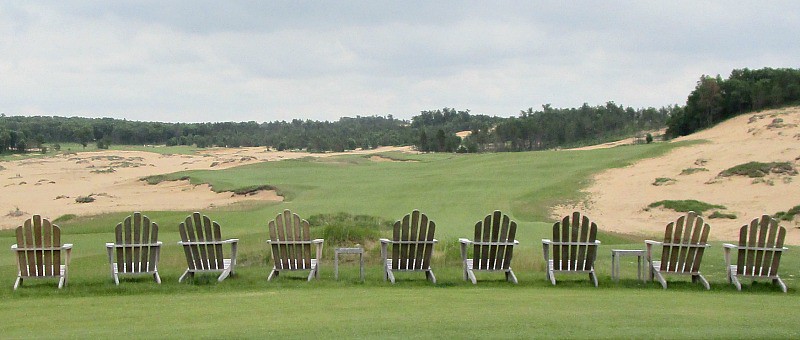
The fairway has two tiers. The lower left side and the higher right side. Many architects would be tempted to fit some centerline bunkers into the ridge that separates the two tiers. The lack of them here is telling. DMK’s emphasis on this course is to make it more forgiving and playable than what he may have done in the past. In a recent Fried Egg podcast he offered a contrast to the concept of “protecting par”, saying his goal here was to “protect birdie.”
Hitting to the left side of the fairway can yield a longer drive, but the approach is obscured by bunkers. I like the steepness of the hill that separates the 2 sides of the fairway.
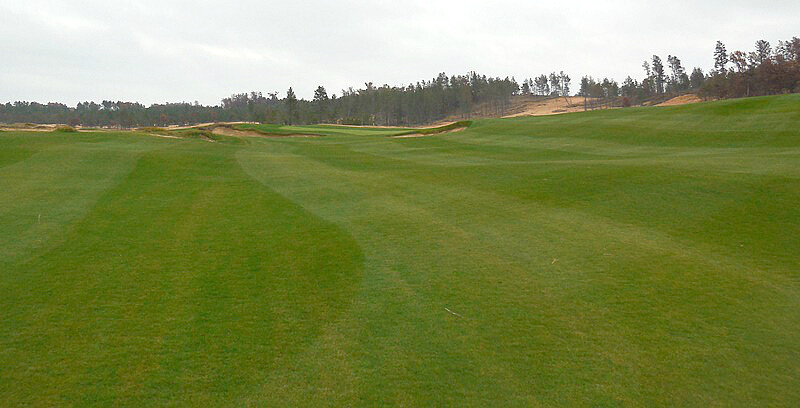
Going right may result in a shorter drive, but the view of the green is a clearer.

The approximately 40 yard wide green fits naturally into a hollow and is surrounded by lots of short grass. This green site is another “tell” of Kidd’s philosophy. Missing the green is not overly penalized, and players can putt, chip, or pitch their ball on the green. Options = fun in my book.
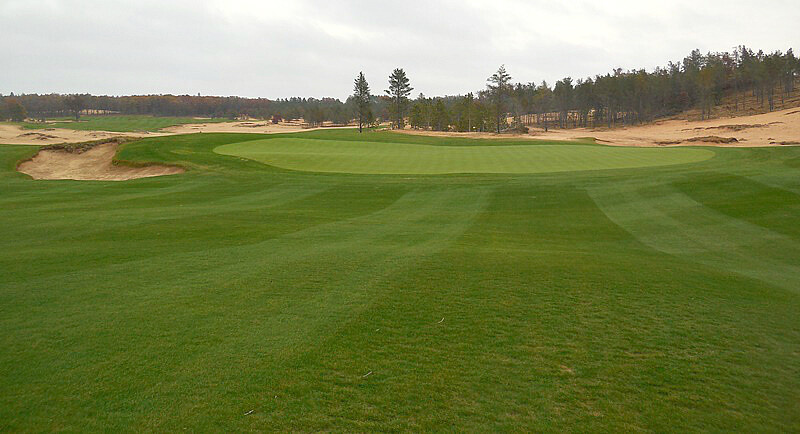
Looking back up the fairway toward the new clubhouse.
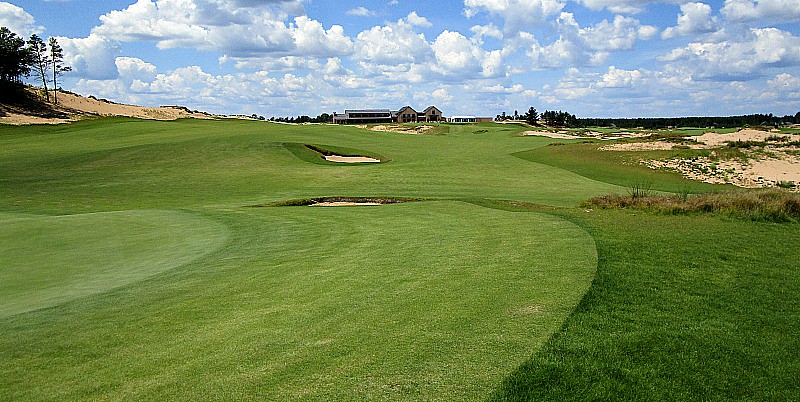
Hole 2 – Par 4
This par 4 offers the player several interesting lines of play. Driving right of the center bunker gives the cleanest look at the green for the second shot. But, this line requires the longest carry over the bunker. Playing left of the center bunker affords an easier carry and a more direct line to the green. But, the green is partially obscured by the fronting dune here.
David McLay Kidd said this was one of the most difficult holes to design because there wasn't an obvious place to site the green. This is the only hole on the course with a total forced carry off the tee. After watching players hit into the bunker, he said he decided to provide a safe route around the sand on the other holes.
From the tee.
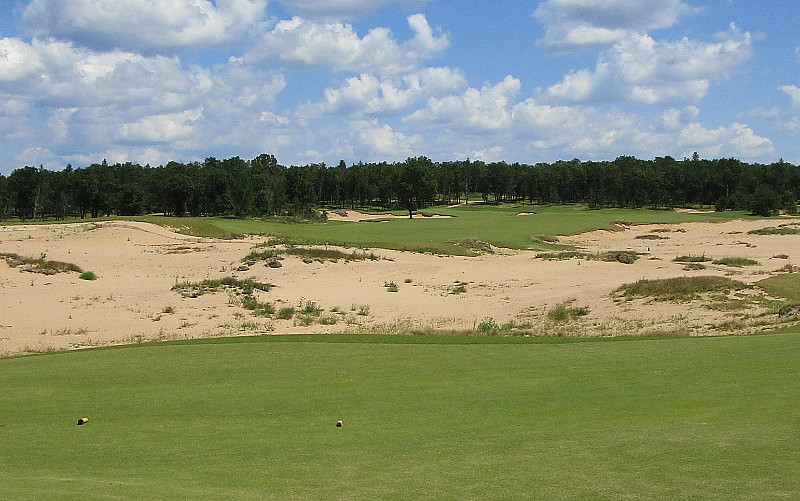
The green is still hidden from this spot in the fairway…
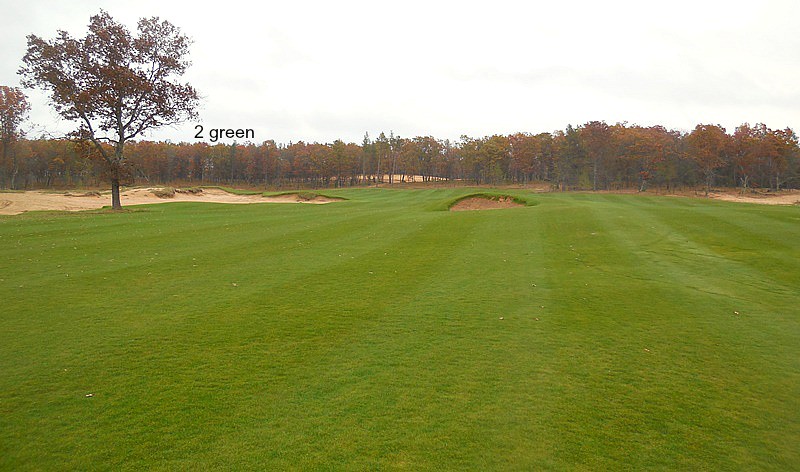 .
.…but it begins to appear as we get closer.
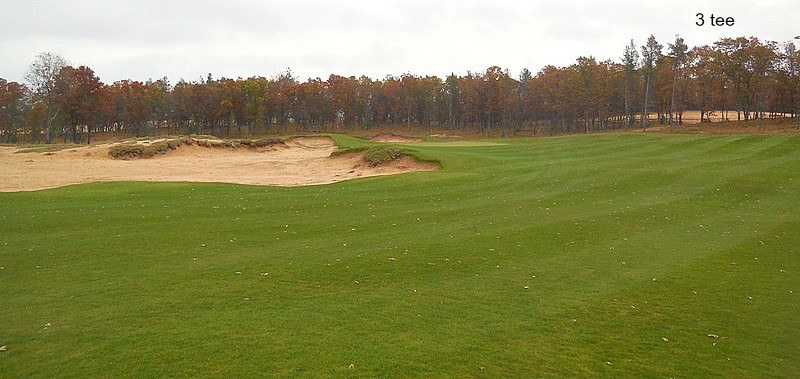 .
.The green from the side and behind.
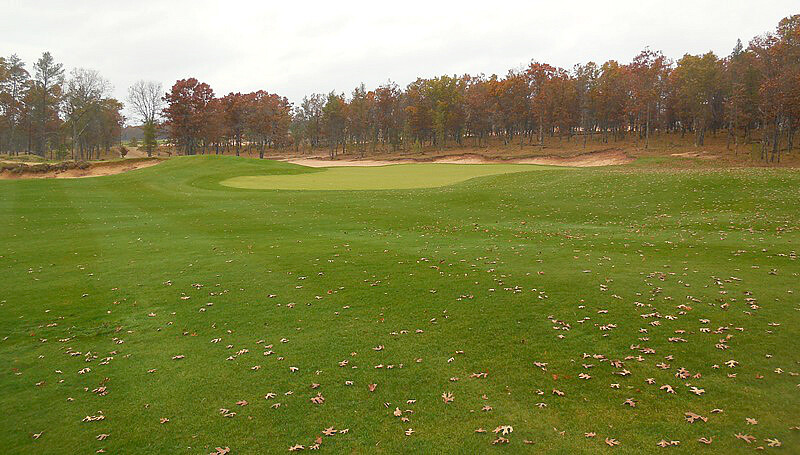
 .
.Hole 3 – Par 5
The third hole has a different feel than the first two as it plays through a corridor of trees. But, that corridor must be 250+ yards wide!
From the tee. The most direct line to the green requires a longer carry over the sand. But a safe route exists on the left side.
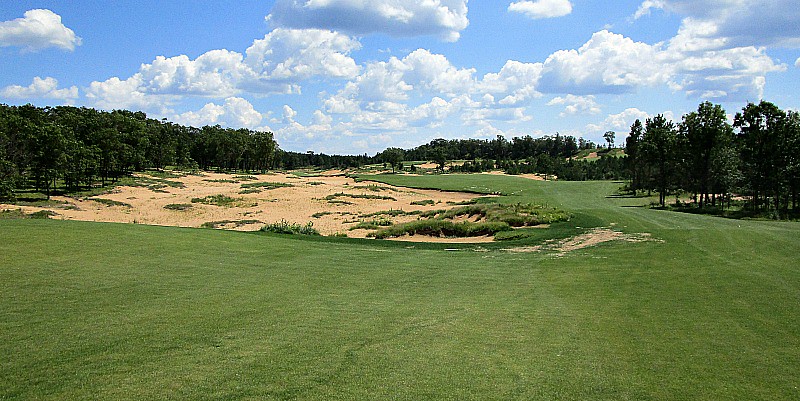
The sand pinches in on the left to add interest to the second shot.
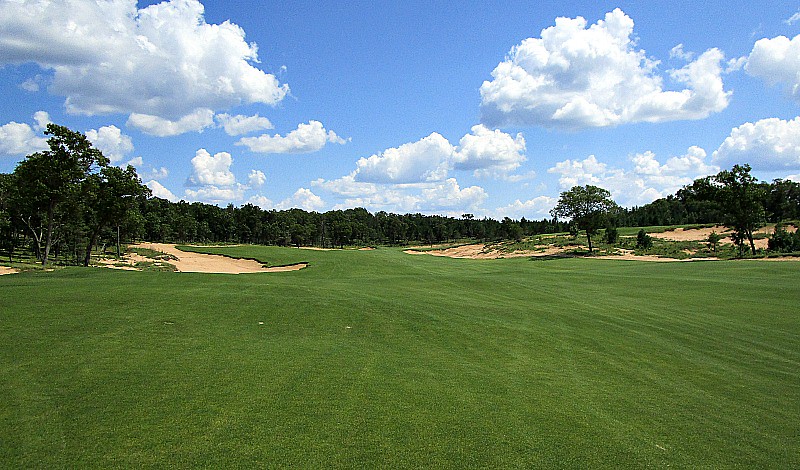
Approach to the large green that has quite a bit of movement.
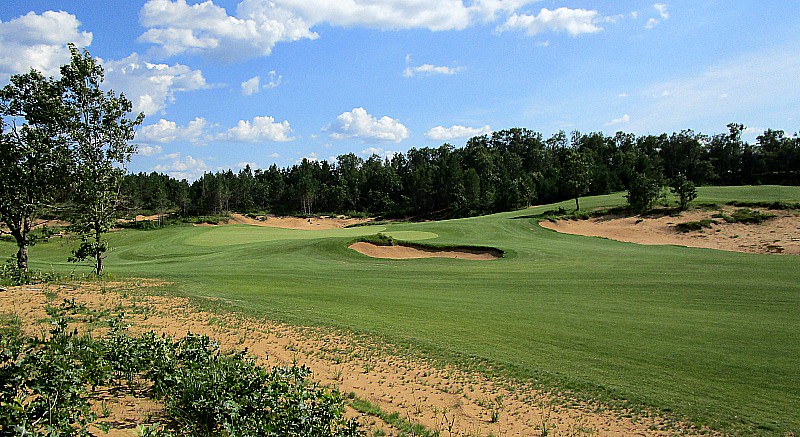
Green from the side.
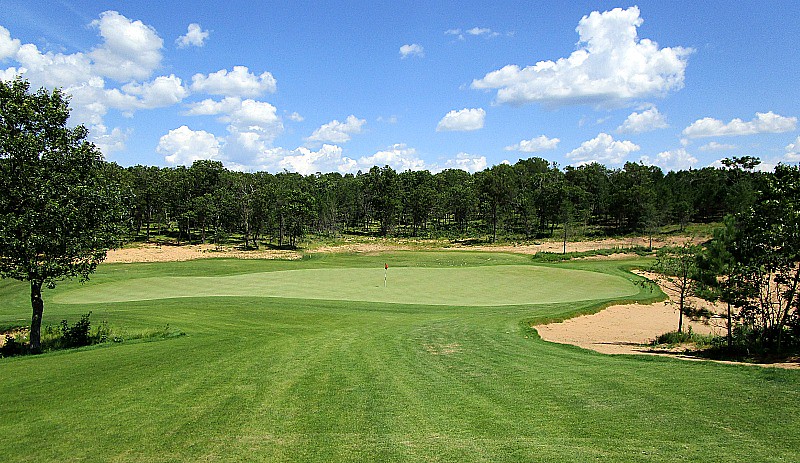
Hole 4 – Par 3
The first par 3 plays up the “V” ridge. The green sits behind a solo bunker. Tee shots hit short and right will come back down the hill.
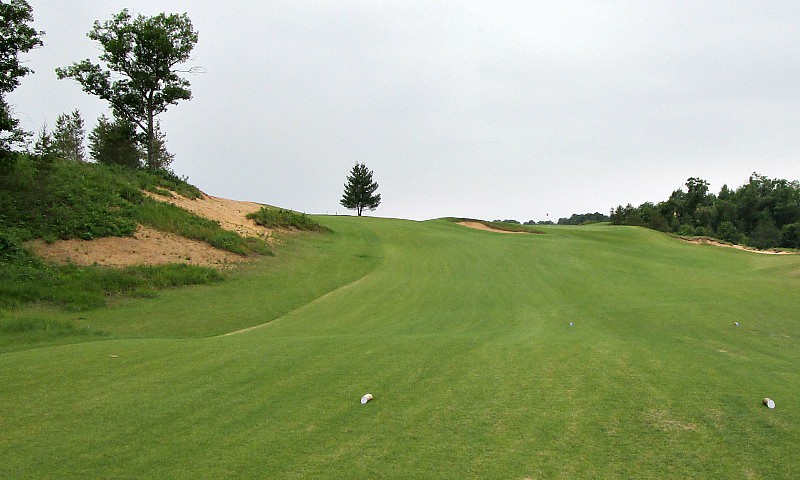
The green has a significant back to front slope.

Neat front left pin location on this clover shaped green.
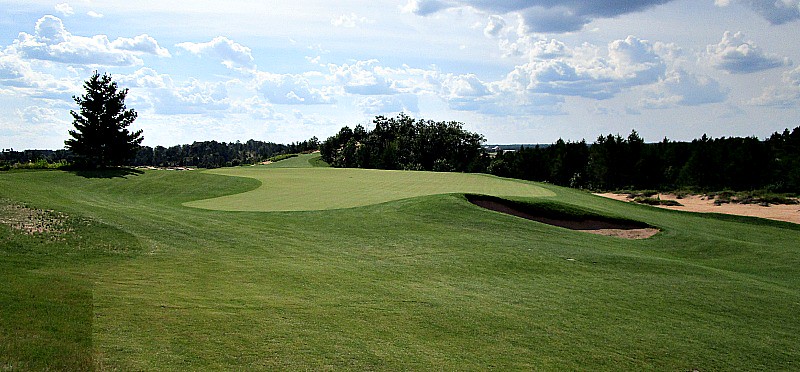
Hole 5 – Par 4
The 5th hole marks the start of a 9 hole stretch that is routed on the outside of the “V” ridge.
This hole is visually stunning and these shots don't do it justice.
The tee shot plays from the top of the “V” ridge downhill to an expansive fairway.
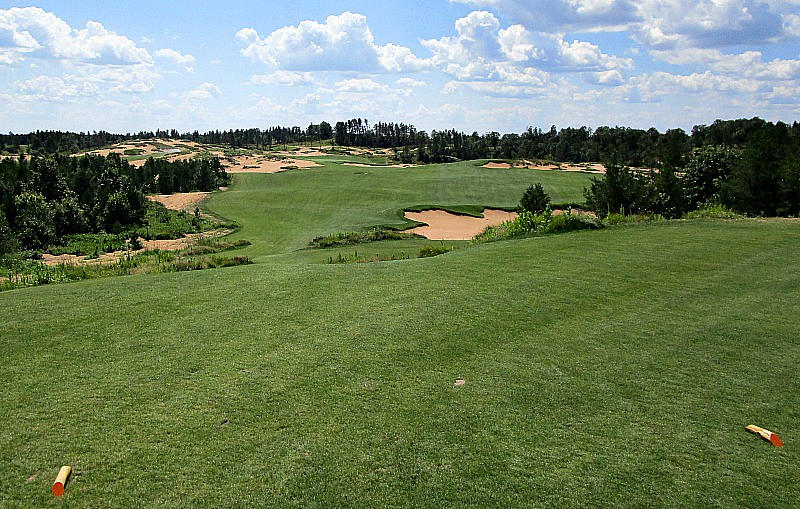
The left to right slope of the green is evident from these front and behind views of the green.
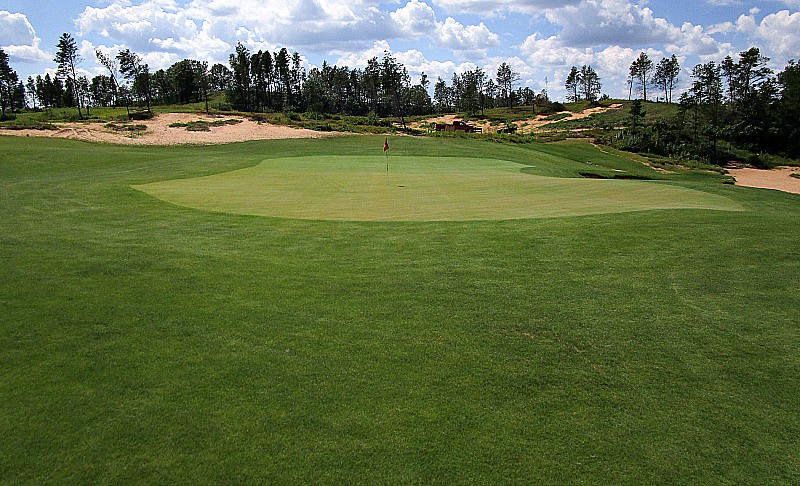
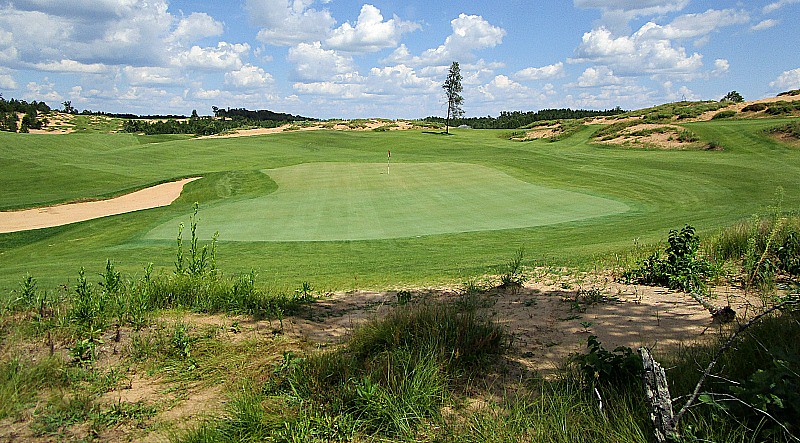
Here's a great look from Evan Schiller on Twitter. 5th hole is on the left and the 6th and 7th holes are on the right.
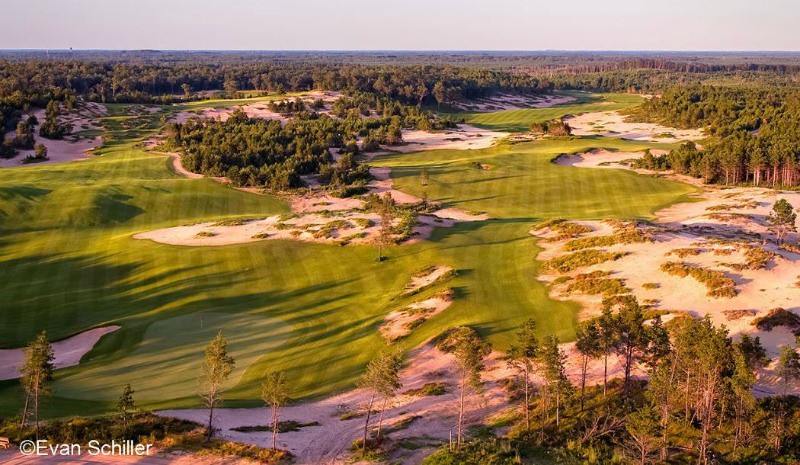
Hole 6 – Short par 4
Short par 4s are often the most unique, creative, memorable, and fun holes on a course. The 6th hole at Mammoth Dunes has those characteristics in spades!
Beautiful tee shot to a wide and rolling fairway. Long hitters will have a chance to drive the green, which is behind the bunker on the right.
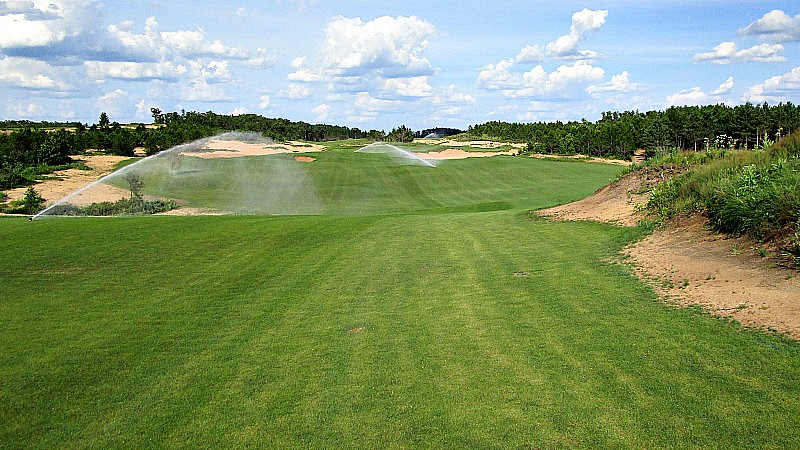
The boomerang shaped green is nestled between 2 small dunes. It's 75 paces from front to back along the outside of the green!
The green is so big that I couldn't capture it in a single frame. Here's the entrance to the green, which wraps around the dune to the right. Note the position of the sprinkler.
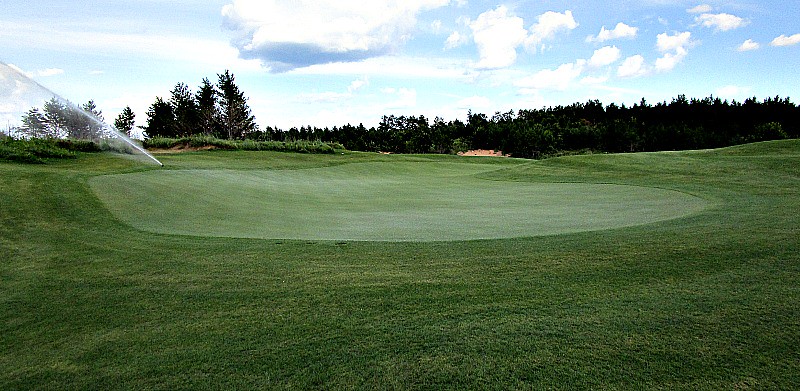
From the back of the green. The same sprinkler is running.
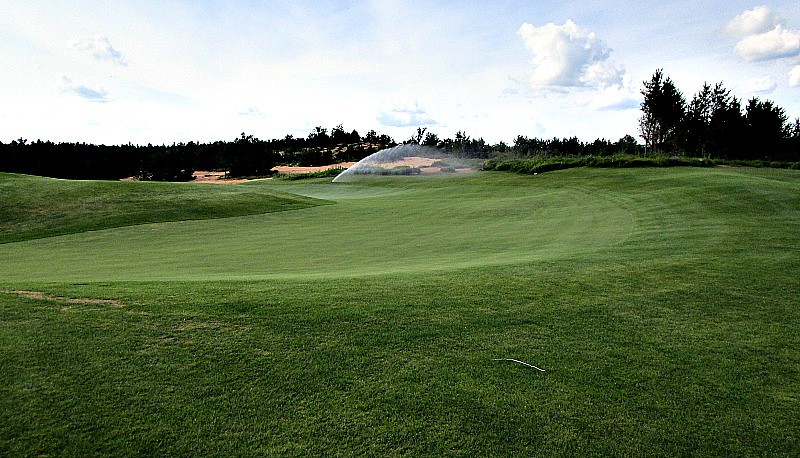
Great overhead shot of this remarkable green and hole taken by Evan Schiller.
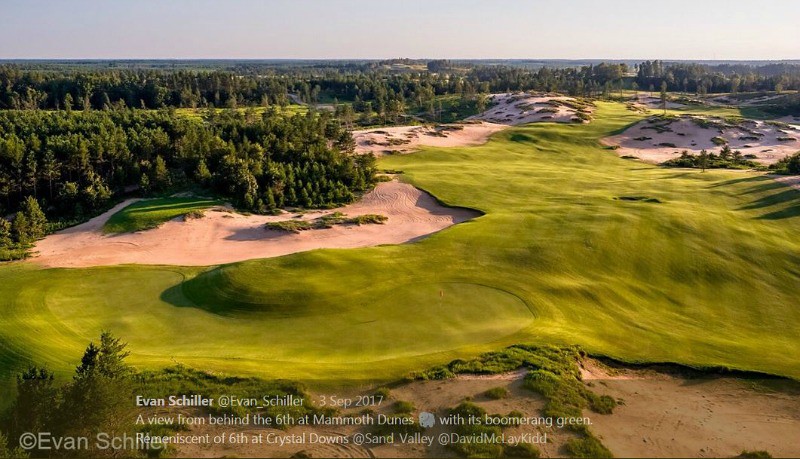
Hole 7 – Par 5
The quirk continues! Uphill tee shot over sand.
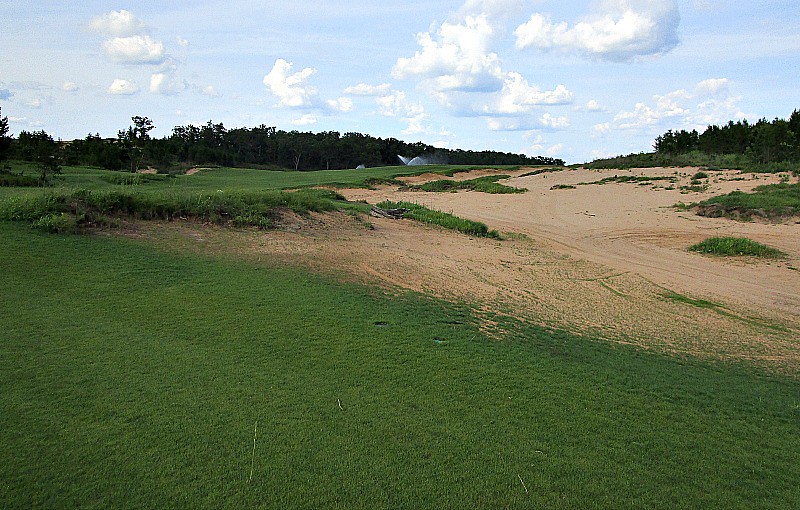
A huge cross bunker forces a 2nd shot decision: lay-up, carry, or tack around.
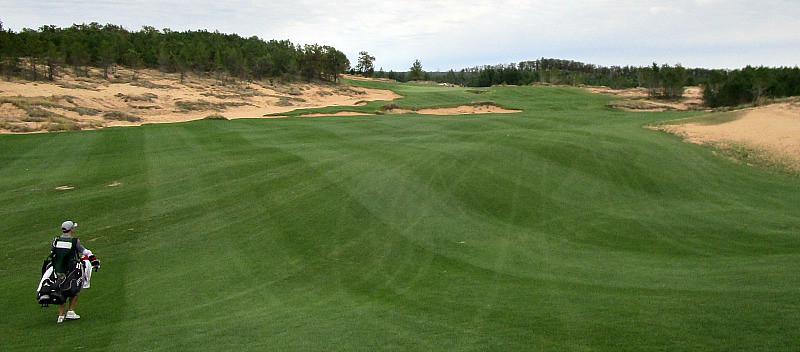
Short right of the green is a mysterious dark spot!?
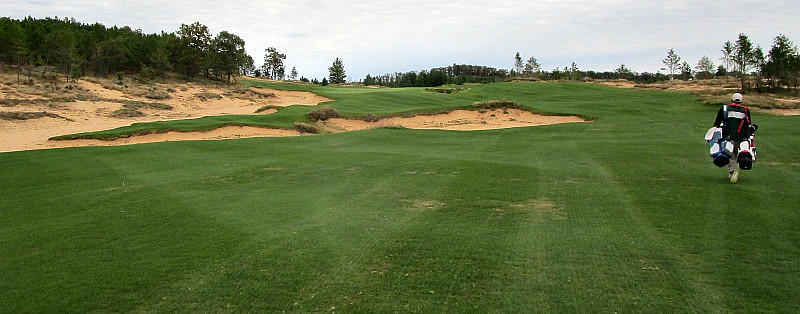
That dark spot is a soon-to-be-famous bunker that is crafted from the foundation of an old building. DMK’s Casey Krahenbuhl found the foundation and built the bunker. Here’s his Twitter photo from 2016.
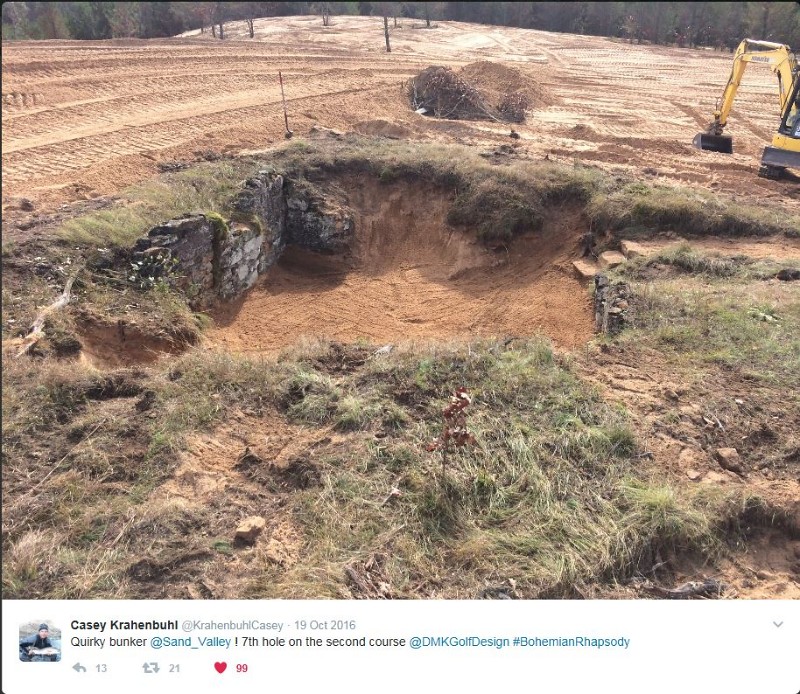
The green is closer to this bunker than what was planned at one point.
October, 2016. The green site is well behind the bunker here.
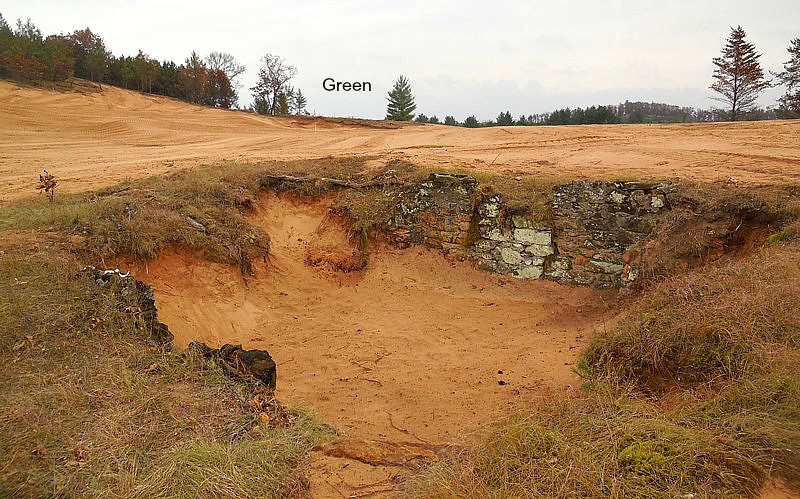 .
.August, 2017. The front of the green is fairly close to the bunker now.
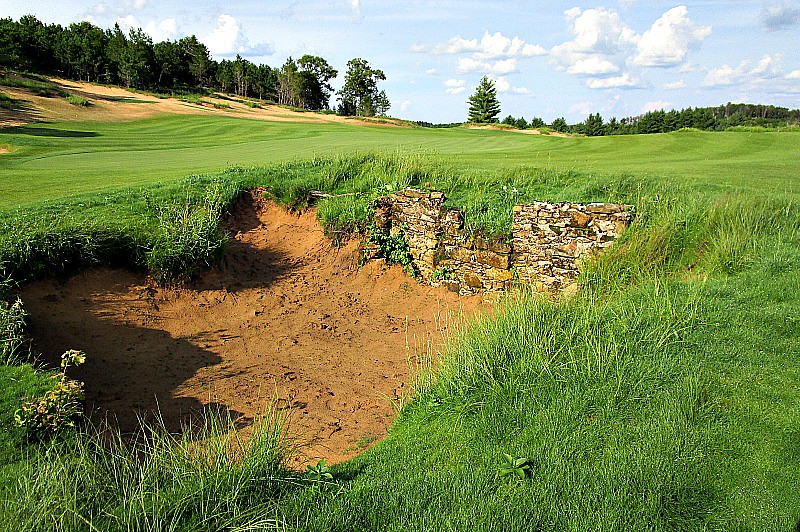
Looking back at the deep green and expansive fairway on this unique hole.
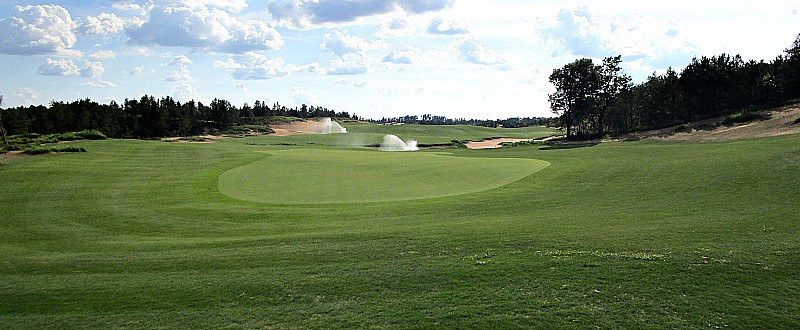
Hole 8 – Par 3
This slightly downhill hole plays from the base of the "V" ridge to a flat area.
October, 2016. Early construction.
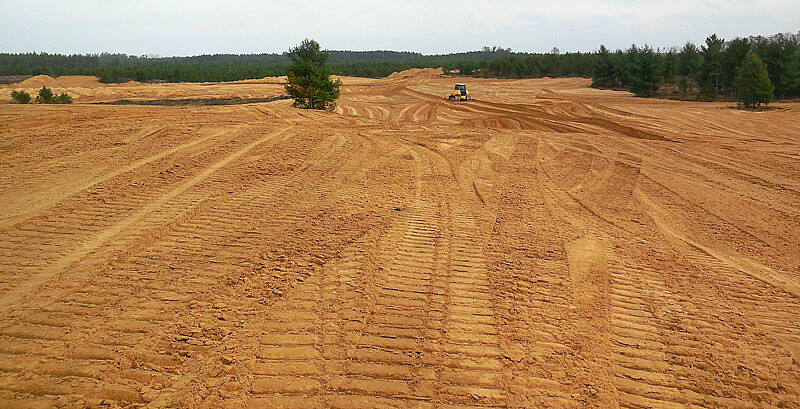
August, 2017. Kidd has created an island green; Sand Valley style!
